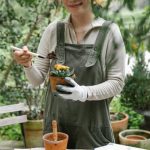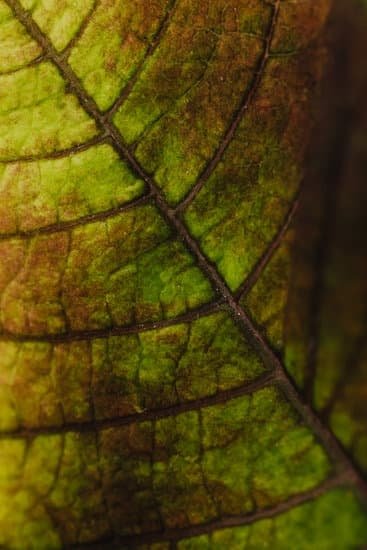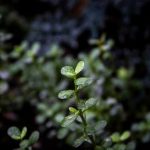Introduction to Pure Food Gardening
Pure Food Gardening is a way to grow organic fruits and vegetables that does not involve the use of synthetic fertilizers and chemicals. The goal of pure food gardening is to produce pure and wholesome food without putting any additional contaminants into the environment. To do this, gardeners use only natural resources such as compost, manure, or fish waste to increase the fertility of the soil. Growing organic foods also eliminates the risk of chemical residues on the fruits and vegetables consumed.
There are several benefits to pure food gardening. It can save money by eliminating the costs associated with purchasing synthetic fertilizers and other post-harvest treatments such as insecticides and herbicides. It can also help reduce water pollution caused by chemical runoff, as well as air pollution because many conventional agriculture practices rely heavily on fossil fuels for production. Additionally, growing your own food gives you greater control over what you’re consuming since you know exactly how it was grown and will be able to harvest it fresher than store-bought varieties.
A typical pure food garden includes vegetables such as tomatoes, peppers, squash, and carrots; herbs; flowers; edible landscape plants like strawberries; dwarf fruit trees; and companion plantings that provide beneficial pest deterrents such as marigolds. With these components in mind a gardener can create an aesthetically pleasing space utilizing sustainable practices that give back to both the environment and their diet!
Preparing the Garden
When preparing the garden for pure food gardening, it is important to use the right kind of soil. Loamy soils are often recommended as they are light and well-drained, however sandy loams or clay loams mixed with compost can also work well. It is also important to fertilize the soil with an organic fertilizer to help promote healthy plant growth. When applying the fertilizer, protective gear should be worn such as gloves and long pants.
Proper irrigation techniques should also be taken into account when gardening. Most plants need consistent watering throughout their growing season and it’s best to water in the early morning so that there is enough time for water to soak down into the roots of a plant before the hot sun of day comes out. This will reduce evaporation and minimize waste. Mulching around the plants can also help keep the soil moist by retaining moisture and reducing weeds from invading your garden space.
Getting Started
Pure food gardening is an enjoyable and rewarding hobby, allowing you to grow delicious, nutritious produce in the comfort of your own backyard. Getting started with a pure food garden begins with understanding what pure food gardening encompasses. This type of gardening focuses on growing natural produce without any chemical additives or harmful pesticides.
Once you’ve determined that the type of gardening you would like to pursue is pure food gardening, the next step is to plan out what vegetables and fruits you would like to grow. You should research the best methods for growing these foods in your specific climate and environment, as this will affect the success of your harvest.
Next, it’s time to choose where in your backyard you will be setting up your vegetable beds and/or fruit trellises (if appropriate). You may need to make preparations such as tilling soil or erecting temporary structures for support if needed before planting bits can begin.
With your plan in place and preparations completed, it’s time to start planting! Be sure that if you are setting up compost bins for your pure food garden that they will not attract pests or other wildlife who might consume or damage your produce before you get a chance to enjoy it yourself. Follow any additional steps needed for individual crops, such as mulching and pruning regularly.
Your garden is an ever-changing landscape — don’t forget about tending and maintaining it by weeding beds regularly and checking for signs of pests or disease so you have healthy produce come harvest season! As long as you keep up with consistent caretaking, things should go reasonably smoothly. Don’t forget to check out helpful tutorials online or consult with a local expert if needed anytime during this process – Enjoy the journey!
Types of Plants to Grow
Common edible plants suitable for a pure food garden include fruits like strawberries, blueberries, apples, and citrus; vegetables like carrots, tomatoes, potatoes, peppers, spinach, kale and lettuces; herbs like basil, thyme, oregano and chives; and legumes such as peanuts or green beans. Eating these plants has multiple nutritional benefits.
Strawberries are low in calories and packed with Vitamin C. Blueberries boast many antioxidants that form an immune-boosting defense system in the body. Apples are an excellent source of dietary fiber which can reduce cholesterol levels and improve gut health. Carrots are rich in Beta-carotene – a plant compound that can be converted to Vitamin A – essential for healthy vision development. Tomatoes contain lycopene which helps protect against heart disease within our bodies. Spinach is high in iron plus Vitamins A & C making it good for bones & brain while Lettuces are especially high in dietary fibers.
Basil adds flavor to meals while also providing antioxidants to fight inflammation caused by joint pain or other illnesses. Thyme is rich in vitamins A & C plus minerals like magnesium – important for bone health plus potassium that helps to regulate heartbeat and prevent stroke risk. Oregano is loaded with fiber, iron and other minerals such as magnesium & zinc – all necessary for proper cell functioning within the body & strong immunity system respectively. Chives maintain healthy digestive systems through their Vitamin C content & promote anti-inflammatory features from their natural oils/flavonoids present in them. Peanuts provide essential healthy fats plus protein that keeps energy levels consistent throughout the day too. Lastly green beans support weight loss with lots of protein effects together with its dietary fibre compounds combined!
If you want to get the best output from yourPure Food gardening efforts then companion planting will help maximize the efficiency of space usage within your garden patch . To illustrate this further you could consider have carrots planted beside tomatoes –it will result carrots receiving certain nutrients from tomatoes while they both thrive off each others growth without competing against one another’s resources!
Insects and Diseases
There are many insects that can infest and plague a pure food garden. These can range from aphids and whiteflies, to beetles and caterpillars. Certain diseases spread by fungi or bacteria can also cause major damage to a garden’s crop. To identify and successfully combat pests,it is important to recognize what signs of damage look like on the affected leaf, stem, or plant. Common signs are wilting or discoloration of the leaves, holes in the foliage, presence of webs, or mucus on the surface of the leaves.
Tips for controlling these pest problems include: removing all affected parts of plants; using organic pesticide sprays; regularly monitoring plants for signs of damage; covering crops when possible (row covers); rotating crops between planting seasons; removing diseased plant material; and improving soil quality with mulch and composting matter. If all else fails, contact your local extension office for advice in identifying and treating insect problems strictly in accordance with established standards aimed at both preserving beneficial insect life and managed pest populations.
Harvesting
Harvesting your own fresh fruits and vegetables is the main benefit of having a pure food garden. Knowing when to harvest is just as important as knowing how to care for your plants. Depending on the type of plant, there are ways to tell when harvesting should occur. Fruits such as tomatoes and peaches should be harvested when the color has changed from green to the desired ripeness. Most vegetables, such as lettuces, peas, beans and squash should be harvested during peak season while they are still tender and flavorful; however, there are some vegetables that can be left on the vine and will become more flavorful over time (e.g., pumpkins).
Once you have picked your produce, it doesn’t need to go immediately into the kitchen. Freezing or drying your fruits and vegetables can help them last longer. Freezing is a great way to preserve most fruits and vegetables so that they are prepared for future use in recipes or snacks; freezing also works best with soft or tender produce such as berries, corn or spinach. You may want to try drying certain produce like herbs which allows them retain most of their color and flavor . Drying also helps extend their shelf-life up to six months!
Storage
Storing and preserving food from the garden is a great way to enjoy homegrown fruits and vegetables throughout the year. The key to successful storage is learning how to correctly prepare the food for storage. Most fruits and vegetables need to be handled with care to ensure they will last as long as possible.
Canning is one of the most popular methods of preserving fruits and vegetables. To safely can food, it needs to go through a process called “thermal processing” which uses heat and pressure to remove oxygen from a jar or container in order to kill harmful microorganisms that could cause spoilage and potential food-borne illnesses. Boiling water canning is the most common method for home preservation of foods because it does not require any specialized equipment.
Another popular method of preservation is freezing. Before freezing, foods must be blanched (boiled quickly) in order to preserve their top quality appearance, taste and nutrition levels when reheated.
Finally, root cellaring is another form of storing food that has increased in popularity since its resurgence in recent years. It involves creating an environment where temperatures remain relatively consistent so fruits, vegetables and other items can stay fresh over an extended period of time. Additionally, dry goods such as grains and dried beans are also kept in root cellars due their low moisture content which inhibits microbial growth.
Conclusion
Pure food gardening is an important practice that can help individuals improve their overall health and quality of life. By growing organic fruits, vegetables, and other plants without the use of artificial fertilizers and pesticides, one can enjoy the produce they consume knowing it is a chemical-free and natural product. Furthermore, pure food gardening also benefits local ecosystems by helping to reduce environmental pollutants from entering water systems.
The restrictions on artificial fertilizer and pesticide usage is being discussed for future plans due to their negative impacts. These chemicals damage plant life and create health risks for humans when eaten or used for human activities. The elimination or reduction of these artificial products could significantly reduce the amount of toxins that enter our bodies and the environment, leading to improved long-term health outcomes. It has become evident that in order to protect both human health and environmental sustainability pure food gardening needs to be encouraged in order to limit synthetic additives and provide healthy options. Ultimately, this will encourage better diet choices while simultaneously preserving unique ecosystems around us.

Welcome to my gardening blog! I am passionate about plants and enjoy sharing my knowledge and experiences with others. In this blog, I will write about everything related to gardening, from tips on how to get started to updates on my own garden projects.





